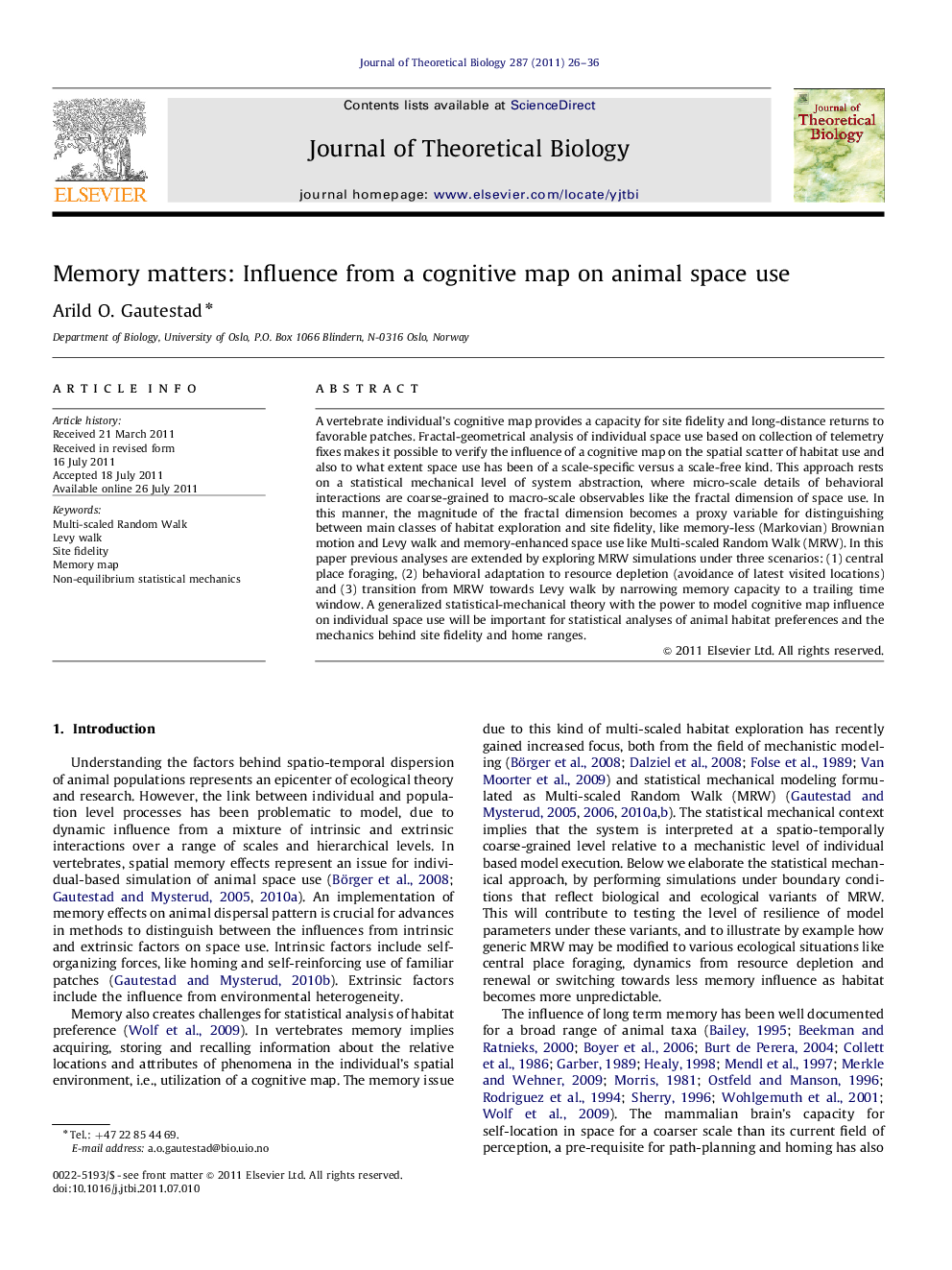| Article ID | Journal | Published Year | Pages | File Type |
|---|---|---|---|---|
| 4496923 | Journal of Theoretical Biology | 2011 | 11 Pages |
A vertebrate individual's cognitive map provides a capacity for site fidelity and long-distance returns to favorable patches. Fractal-geometrical analysis of individual space use based on collection of telemetry fixes makes it possible to verify the influence of a cognitive map on the spatial scatter of habitat use and also to what extent space use has been of a scale-specific versus a scale-free kind. This approach rests on a statistical mechanical level of system abstraction, where micro-scale details of behavioral interactions are coarse-grained to macro-scale observables like the fractal dimension of space use. In this manner, the magnitude of the fractal dimension becomes a proxy variable for distinguishing between main classes of habitat exploration and site fidelity, like memory-less (Markovian) Brownian motion and Levy walk and memory-enhanced space use like Multi-scaled Random Walk (MRW). In this paper previous analyses are extended by exploring MRW simulations under three scenarios: (1) central place foraging, (2) behavioral adaptation to resource depletion (avoidance of latest visited locations) and (3) transition from MRW towards Levy walk by narrowing memory capacity to a trailing time window. A generalized statistical-mechanical theory with the power to model cognitive map influence on individual space use will be important for statistical analyses of animal habitat preferences and the mechanics behind site fidelity and home ranges.
► Models of animal movement are generally based on the Markovian assumption. ► Long-term memory needs to be implemented, to reflect vertebrate behavior. ► Three scenarios are simulated under memory-enhanced and scale-free space use. ► Memory-extended statistical mechanics is described and discussed.
